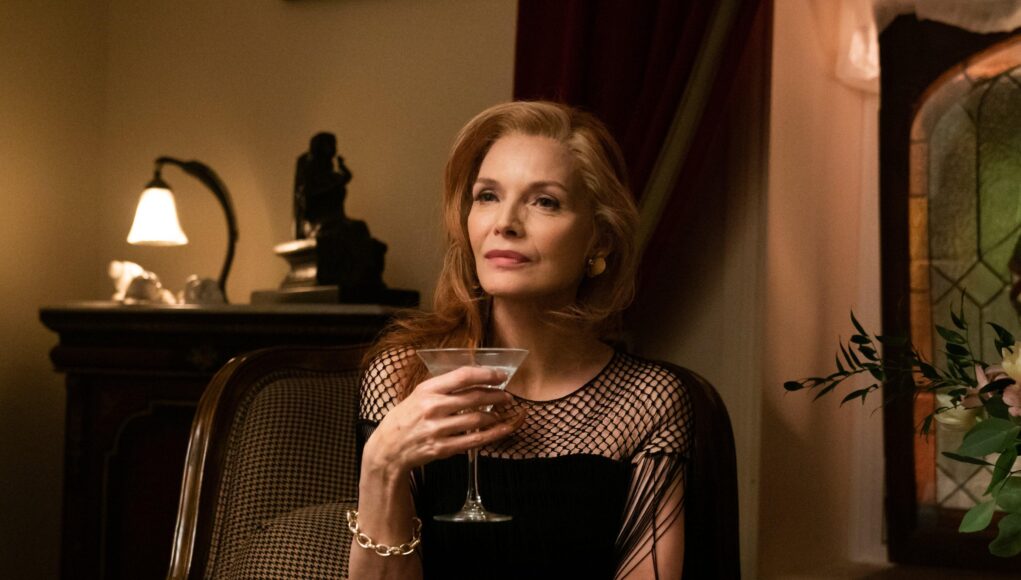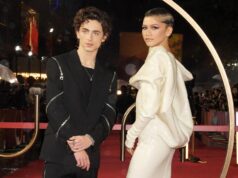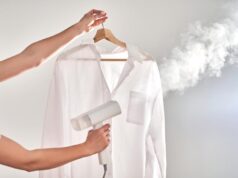In Azazel Jacobs’s new comedy, French Exit, Michelle Pfeiffer and Lucas Hedges star as Frances and Malcolm, a widowed mother and son whose aimless, lavish existence in New York is disrupted when the money runs out. Forced to sell off their remaining belongings, they decide to take the cash and decamp to Paris, accompanied by their cat—who, it turns out, just may be a reincarnation of Frances’s husband. Along the way a motley crew is pulled into their orbit, including, variously, a fortune-teller they meet on their transatlantic cruise ship; a lonely American widow in Paris; and a third-act appearance from the jilted fiancée Hedges left in New York, along with her new lover.
Any fear that the film might drift too deeply into Wes Anderson–esque whimsy is undercut by the script’s deliciously acerbic humor and the campy delusion with which Pfeiffer delivers all the best lines, coming across as somewhere between an Upper East Side Norma Desmond and Schitt’s Creek’s Moira Rose. At times Pfeiffer barely needs to speak to draw a laugh: Among the highlights is a scene in which a French waiter dillydallies in bringing their check and goes outside for a smoke, only to watch with horror through the window as Frances spritzes perfume on the small vase of flowers at their table, flicks her lighter, and sets them on fire.
It’s a career-high performance for Pfeiffer, and one that’s achieved not just with the help of a number of brilliantly scathing one-liners and a seemingly permanently raised eyebrow, but also through a never-ending carousel of lavish fur-trimmed coats and velvet dressing gowns that perfectly reflect the hubris and faded glamour of her character. For Emmy-winning costume designer Jane Petrie—who first made her name in the 2000s with British indie standouts like Andrea Arnold’s Fish Tank and Duncan Jones’s Moon, but has more recently earned attention for big-budget costume dramas such as Netflix’s The King and the second season of The Crown—the film’s character-driven narrative was an opportunity to return to her roots.
“I’ve usually been quite good at following my instincts, but before French Exit, I came off a project that I didn’t particularly enjoy,” Petrie remembers. “And I spoke to my agent and said, ‘I really, really need my next job to be something that I’m really keen to do, that’s right up my street.’ I remember saying I’d love to do something that feels like a Jim Jarmusch film or Aki Kaurismäki or something like Harold and Maude. And then [I got] French Exit, and it was just perfect, so characterful and timeless, and it felt like it took place in its own little world.”
It’s this sense of the film existing somewhat out of time that Petrie wanted to reflect in the costuming, with Pfeiffer’s wardrobe flitting between minimalist ’90s New York City sophistication and a more retro brand of luxury steeped in cashmere, fur, and tan leather handbags. “I mean, you can’t ever make anything feel truly timeless, but I tried to look at things that I felt were fairly classic, without wanting it to feel like a period film either,” says Petrie. “It was about trying to find ways of hitting the right pitch so all of the pieces fit together.” It’s a language of subdued opulence that is reflected not just in the spirit of Pfeiffer’s character, but in the nature of the film too, which has a certain scrappy, indie energy to it despite its sumptuous trappings. French Exit is the kind of film that you are surprised is still able to get made but glad it did.
It was working within a budget that led Petrie to some of her most creative moments as a designer—particularly when it came to sourcing vintage pieces that could communicate the level of wealth that Pfeiffer’s character once possessed, while also reflecting her slightly shabbier new circumstances. “We filmed a lot of it in Montreal, and they have these amazing concession stores there, where people with crazy shopping habits buy really expensive clothes, wear them once, and then sell them,” says Petrie. “There’s a great pink vintage Céline shirt from the ’70s she wears at the beginning with a pair of Cartier sunglasses, but in among that, there were new pieces too, like the black suit that she wears when she comes off the boat; I think underneath her coat was Dolce & Gabbana. There’s a whole mix.”
Of course, it also helped to be working with an actor like Pfeiffer, whose instincts for costuming are so finely tuned—and who was always willing to dive into her own closet to find the perfect piece. “It was very collaborative,” adds Petrie. “Michelle’s really smart, and she likes clothes and knows clothes well, and she’d done all of her homework on the script, so we’d meet with a list of the scenes that were coming up and have a session trying on lots of things. Even if it was something from her own wardrobe, like a shirt she wears in one scene while sitting in the kitchen, she was brilliant.” Only one question remains then: Where do we source one of her golden velvet robes?
It’s a vintage piece, apparently, but thankfully a quick browse of Etsy turns up a number of similar throwback styles—all ready to be accessorized with a crisp martini and a withering put-down, of course.








